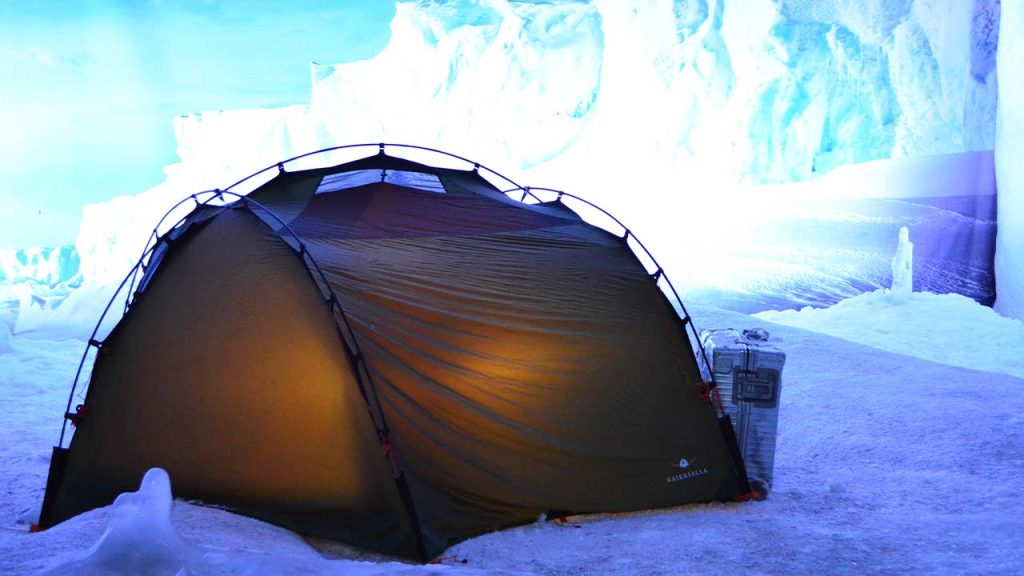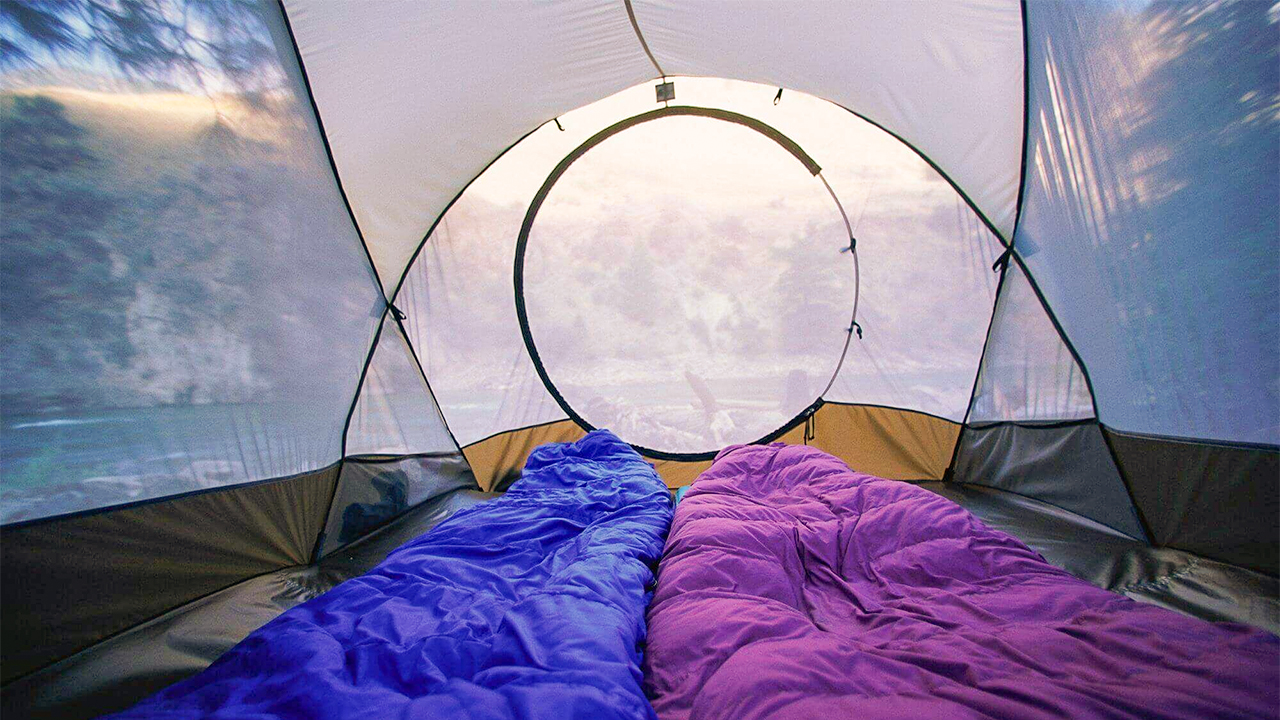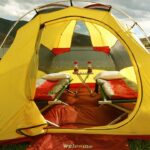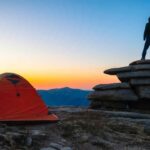Camping is a wonderful way to experience the great outdoors.
However, few things can ruin a camping trip faster than waking up cold and damp in the middle of the night. Moisture accumulation in your tent and bedding is a common issue that many campers face.
It can be caused by condensation due to temperature differences between the tent’s interior and the outside air. Other factors include a leaky tent allowing rain or ground moisture in, camping near water sources creating humidity, high humidity levels without proper ventilation, and excessive airflow causing moisture to evaporate from the skin and dampen bedding.
In this comprehensive guide, we’ll explore these causes of wet bedding and provide tips to help you stay dry and comfortable all night long.
What Causes Dampness in Your Tent and Bedding?
There are two main culprits when it comes to moisture buildup inside your tent and on your bedding at night:
Condensation
Condensation occurs when warm, humid air meets a cold surface. At night, the air inside your tent is warmer than the exterior air thanks to body heat from occupants.
When this warmer interior air comes into contact with the cold walls and ceiling of your tent, water vapor condenses on these surfaces. This moisture can then drip down onto your sleeping area.
Condensation is worse when ventilation is poor. If you close up your tent at night, the warm air has nowhere to go. This allows humidity levels to rise rapidly.
Leaks
Leaks allow rainwater and ground moisture to seep into your tent. This can occur if your tent floor or rainfly has any gaps, tears, or openings. Setting up your tent improperly can also lead to leaks.
For example, if the rainfly doesn’t extend far enough over the tent body, rain can get blown in under it during storms. An ill-fitted footprint or tarp can also let groundwater rise up.
Camping Near Water
Camping near lakes, rivers, or the ocean can create a humid environment with fog and mist that sticks to the tent’s exterior.
This moisture can then transfer through the walls and make bedding damp, especially with poor ventilation. The proximity to water means the air is more saturated.
Excessive Humidity
Humid conditions will cause bedding to feel damp since moisture is present in the air. This is especially true if the tent has inadequate ventilation and airflow.
The human body also gives off moisture while sleeping which accumulates in the enclosed tent space. High humidity basically maximizes the moisture content inside the tent.
Excessive Airflow
While ventilation is important, too much airflow can also make bedding feel clammy. Excessive airflow causes moisture to evaporate from the skin into the air.
If it cannot escape from the tent, it will condense on sleeping bags and sheets making them damp. Having all windows and vents open may create too much air movement.
Paying attention to these common moisture sources can help you pinpoint ways to keep your tent and bed more dry on your camping trips!
Tips to Prevent Wet Bedding When Camping
Luckily, with some preparation and the right gear, you can stay dry and comfortable at night even in damp conditions:
Choose a High-Quality 3-Season Tent
Invest in a durable, weatherproof 3-season tent from a reputable brand. Three-season tents are designed to offer protection from wind, rain, and moderate cold while still providing good ventilation. Make sure to select the appropriate size tent for the number of occupants.
Inspect the floor, rainfly, and seams for any flaws. Many quality tents also have taped or sealed seams to prevent leaks. Pitch your tent properly and use all guy lines and stakes to keep it taut.
Use a Footprint and/or Tarp Underneath
Placing a tarp or tent footprint (a tarp specifically sized to your tent’s dimensions) directly under your tent provides an extra barrier against moisture. The footprint or tarp prevents groundwater from seeping up through the floor. It also protects the tent bottom from getting abraded by rough terrain.
Insulate Your Sleep System
Use a sleeping pad or insulated air mattress with a high R-value, which indicates the level of insulation it provides. Higher R-values (at least 3 or more) result in more warmth and protection from the cold seeping up from the ground.
Insulation prevents body heat loss through the bottom of your bedding, which reduces condensation forming on tent surfaces above you.

Inflatable mattresses and pads designed specifically for camping will insulate much better than regular air mattresses that have an R-value of 1 or less. Outdoor-specific mattresses have insulation like foam or synthetic fibers built into them.
The insulation creates a thermal barrier between your body and the cold ground, preventing heat loss so condensation is less likely to form near your sleeping area.
You also want to avoid cotton sheets and blankets in your sleep system since cotton tends to absorb and retain moisture rather than wick it away.
Synthetic or wool bedding materials will stay warmer in case they do get slightly damp. Having proper insulation is a key step in the battle against tent condensation and wet bedding.
Allow for Adequate Ventilation
Keep any mesh windows, vents, and door openings uncovered and open as much as weather permits.
This allows moist, humid air to escape from your tent. Using a battery-powered fan improves airflow and reduces condensation. Just make sure to close tent flaps if heavy rain or storms are expected.
Manage Interior Humidity
Use moisture-absorbing products to reduce humidity inside your tent. Silica gel packets or a rechargeable dehumidifier can help remove moisture from the air and surfaces inside. Make sure to empty and recharge as needed.
Ensure Your Sleeping Bag is Water-Resistant
Choose a sleeping bag made from synthetic materials or water-resistant down. These materials provide insulation even if they get damp.
The outer shell should have a durable water-repellent (DWR) coating to make it water-resistant. Avoid sleeping bags with a cotton shell, which stays wet longer.
Keep Wet Gear Outside
Never store damp, wet clothing or gear inside your tent. The moisture will make the interior environment more humid. Use external storage bags to keep wet equipment protected but outside.
Set Up in a Sheltered Spot
Look for a campsite that offers protection from wind and rain, such as beneath a stand of trees or rock overhang. Avoid setting up in low-lying areas or depressions that can collect water. Position your tent door away from prevailing winds.
Dry Out Your Tent and Bedding
If your bedding does get damp, take it out of the tent during dry daytime hours to air out completely. Use a towel to wipe down tent walls and surfaces. Open up doors, windows, and vents to maximize ventilation and drying time.
Consider a Portable Heater
A small, battery-powered heater can be used to warm up your tent at night or dry it out in the morning after condensation forms.
Make sure it is specifically designed for tent use with proper ventilation and safety auto-off features. Never leave one unattended.

Additional Tips for Keeping Your Tent Dry
- Avoid cooking inside your tent since steam and food odors create moisture
- Use a plastic tarp over your tent as extra protection from rain
- Make sure your rainfly fits snugly over the tent body
- Store camping gear in waterproof bags or packs
- Try to camp away from bodies of water which create damp air
- Wipe down tent walls with absorbent towel if condensation forms
- Allow wet tents to dry out fully before packing them up
With the right gear and good moisture prevention habits, you can stay cozy and dry while sleeping in a tent – even in cold and damp conditions.
By taking steps to reduce interior condensation and prevent exterior leaks, you can wake up refreshed instead of damp. Follow these tips to keep your bedding dry on your next outdoor adventure. Sleep tight and stay dry!
Frequently Asked Questions About Wet Tent Bedding
Below are answers to some common questions about moisture control for camping:
Why does my sleeping bag feel wet in the morning?
This is likely due to condensation forming on the interior of your tent overnight and dripping onto your sleeping bag. Make sure to use a tent rainfly and keep windows/vents open to allow airflow. You can also use a dehumidifier or moisture-absorbing gel packs inside your tent.
What should I put under my tent to keep the floor dry?
Use a tarp or tent footprint to create a moisture barrier between the tent floor and the ground. The footprint should cover the entire area under the tent floor to prevent groundwater from seeping up. Make sure it is fitted properly with no gaps.
How do I stop the walls of my tent from “sweating”?
Excess condensation on tent walls is caused by poor ventilation and/or high interior humidity. Make sure to keep mesh doors, windows and vents open unless it’s raining. Using a portable fan improves airflow. A dehumidifier or ventilation fan at the top of the tent also helps keep moisture down.
Why does my air mattress feel wet when camping?
Inflatable mattresses without insulation can absorb ground coldness, causing condensation to form on the surface from your body heat. Use a closed-cell foam pad or an insulated/camping-specific air mattress with an R-value of at least 3 for insulation.
What is the best sleeping bag filling material for damp conditions?
Synthetic insulation like polyester is best for damp climates since it retains insulating value when wet. Down-alternative fill also works well. Avoid down and cotton, which lose their ability to insulate you if soaked. Make sure the shell has a DWR coating.
How do I dry out a tent that got wet from rain?
Set up the wet tent during dry weather. Open up all vents, windows and doors fully to maximize airflow. Wipe down the walls and ceiling with an absorbent towel. Consider placing a fan inside to circulate air. Rotate it occasionally to dry all sections.

Diana Miller, is a dedicated nature enthusiast and an outdoor adventurer. She began leading groups for excursions in her teens and never stopped. Following her passion for nature, she gathers her friends for outdoor trips every now and then. And for the last 10 years, she has executed workshops on backpacking, snow kayaking and traveling that included her main motive of lightweight packing while outdoors. During leisure, she loves planning for her next adventure.









Leave a Comment